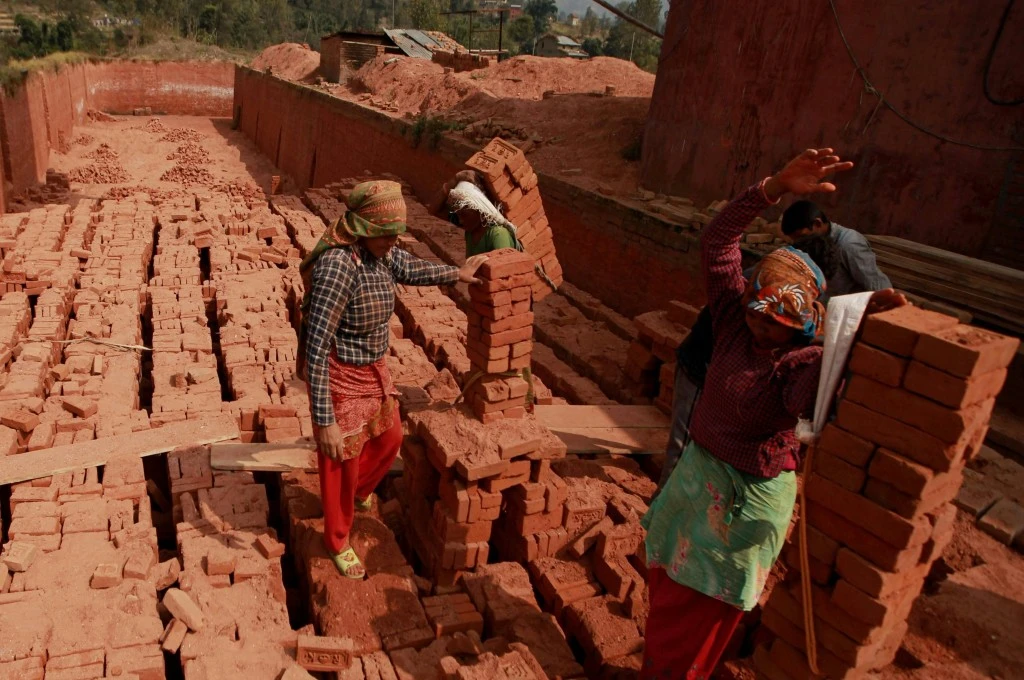It is estimated that 73.2 percent of the rural female workforce is engaged in agriculture (compared to 55 percent of male workers). Approximately 80 percent of all economically active women are employed by the agricultural sector. Despite this, ownership of land in India is highly skewed in favour of men, with women constituting barely 14 percent of all landowners in India.
In an Indian rural setting, agricultural land is not just the most critical productive resource for a family, but is equally important for identity and status as well as for food and nutrition security, particularly for women. Moreover, as per the IPCC’s 6th assessment report on global climate change, agricultural land in India is now severely threatened by climate change1—a fact that has been recently acknowledged by the Government of India as well. With increasing climate shocks having a disproportionate impact on farming communities, it is important to recognise that ownership of agricultural land makes a case for not just gender equality, but also for better climate action. Here are our two primary arguments for the same.
1. Owning land will grant women farmers access to government compensation and relief measures for crop loss due to climate shocks, which will also benefit their families
It has been established that though recurring climate shocks affect all, women and men experience it differently, with women bearing the brunt disproportionately due to inequalities in social norms and power relations. In such cases, ownership of land acts as a shield for women who can access the government’s climate measures through relief packages for the farming community.
In many countries, including India, government compensation for crop failure and financial losses protects farmers against severe yield reductions due to climate change. For example, the Mukhya Mantri Kisan Sahay Yojana of Gujarat announced on August 10, 2020, covers three risks: drought, heavy rain, and unseasonal rain. All farmers in Gujarat who possess agricultural land and hold a sanad2 are considered its beneficiaries. Likewise, compensation packages and schemes announced in 2020–21 as risk management measures against climate change for the farming community in Gujarat were all linked with land ownership.

However, it is difficult to get gender-segregated data on the women farmers who are reached by these packages. If one assumes that all those who own land have availed the compensation, women won’t account for more than 10–15 percent of the beneficiaries, and this is without factoring in other gender constraints such as lower mobility, exposure, and knowledge about relief packages.
Matters become worse when money for crop-based climate risk management is directly transferred to bank accounts. Due to the gendered nature of land ownership patterns, it is largely men who own the land and hence receive the money in their accounts. This bars women from accessing the compensation or having a say in how it is used. In fact, in several cases, women don’t even know that the compensation has been deposited.
A report by FAO suggests that following agro-ecological practices such as intercropping, mulching, and bio-inputs increases climate resilience.
This is a major gap because it has been proven that when women have access to financial resources, it not only increases their agency and decision-making power within the household, but also directly benefits the entire family by enhancing food security and nutrition and increased expenditure on health services, medication, etc. Further, research shows that cash transfers can increase women’s decision-making power and choices, and also reduce physical abuse by male partners. This is especially significant when reduced production, income, and uncertainty arising out of climate shocks lead to conflicts in the home.
2. Women farmers are likely to adopt climate-resilient agricultural (CRA) practices more when they own the land they work on
A report by FAO suggests that following agro-ecological practices such as intercropping, mulching, and using bio-inputs increases climate resilience. Unlike chemical-based farming where women farmers have to depend on male farmers for money, information, and markets, agro-ecological farming focuses on biodiversity conservation and traditional knowledge, often preferring local seeds and crop varieties. In my work with women farmers, I have found that this is one of the reasons they are keener than their male counterparts to adopt these practices. However, the intra-household decision-making in a patriarchal set-up is in the hands of men, who are more prone to prioritising higher income and productivity over, say, soil health. It is not surprising, then, that preliminary findings from the evaluation of the women’s land tenure security and green subsidy components show that climate-smart agriculture practices are more effective when women hold land rights. Increased tenure security increases smallholder investments in climate adaptation and productivity.
Climate shocks increase women’s labour, decrease their food security and education opportunities, and negatively impact their overall health and well-being.
In fact, in my eight years of experience working in women’s land ownership and CRA practices, I have seen that as women farmers gain land titles—even if it’s a small patch of land—they are able to overrule their husbands and try out CRA practices. More often than not, if the women succeed, the men in the family see the results of these CRA practices and eventually follow suit. Since climate change has the potential to reduce agricultural income by 15–25 percent, it is crucial to adopt CRA practices at scale.
Women’s land rights and climate change: The way forward
Anecdotal evidence shows that women’s land ownership and the adoption of CRA practices have a positive association. While land ownership for women is required for perspectives of gender equality, empowerment, or productivity enhancement, it is also important for climate adaptation and mitigation. This is even truer in agriculture-based communities, where climate shocks increase women’s labour, decrease their food security and education opportunities, and negatively impact their overall health and well-being. As such, today we need a systematic evidence-based study on these linkages and the appropriate action that should be taken as a result of them.
Footnotes:
1. Most notably, the report states that monsoons in India are likely to increase in frequency and be more extreme in central parts of the country, and, simultaneously, the duration of dry spells across the country is likely to increase.
2. A sanad is a document given by the government that entitles a forest dweller to land under the Forest Rights Act.
—





